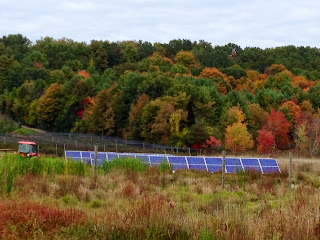 |
| The Parker River National Wildlife Refuge, managed by the Department of the Interior's U.S. Fish and Wildlife Service. |
The U.S. Department of the Interior protects America’s natural resources and heritage, honors our cultures and tribal communities, and supplies the energy to power our future.Twice a year, the Interior Department publishes a statement of its regulatory priorities. The most recent statement, issued November 26, features several initiatives designed to promote the development of renewable resources on public lands.
As noted in the Department's statement, under the Obama Administration, the Department has focused on renewable energy issues and has established priorities for environmentally responsible development of renewable energy on public lands and the Outer Continental Shelf. Energy producers and developers are investing in the development of wind farms off the Atlantic seacoast and solar, wind, and geothermal energy facilities throughout the West. The Department announced its intent to continue its intra- and inter-departmental efforts to move forward with the environmentally responsible review and permitting of renewable energy projects on public lands, and to streamline regulatory processes to facilitate the responsible development of these resources.
Like most federal agencies, the Interior Department is organized as a collection of bureaus and offices. These agencies include the Bureau of Land Management, which manages the 245-million-acre National System of Public Lands, located primarily in the western States, including Alaska, and the 700-million-acre subsurface mineral estate located throughout the nation. The Bureau of Land Management's regulatory priorities include creating a competitive process for offering lands for solar and wind energy development. Specifically, the Bureau is proposing competitive bidding for lands within designated solar and wind energy development leasing areas. The proposed rule is designed to enhance BLM's ability to capture fair market value for the use of public lands, ensure fair access to leasing opportunities for renewable energy development, and foster the growth and development of the renewable energy sector of the economy.
If the Bureau of Ocean Energy Management's recent auctions for offshore wind sites on the Outer Continental Shelf are any example, the Bureau of Land Management may soon be holding competitive auctions for land-based renewable energy sites. These auctions will likely seek to balance support for responsible resource development against conservation, as the Department also includes conservation-oriented agencies such as the U.S. Fish and Wildlife Service and the National Park Service.
Yet how these regulatory priorities translate into regulatory action -- and how that regulatory action affects the development of renewable resources -- remains to be seen.









